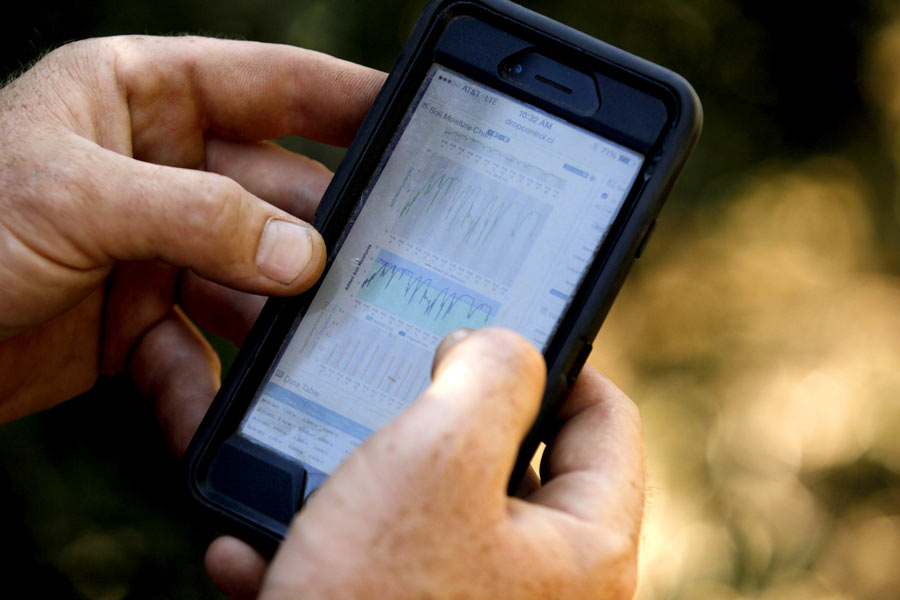New App Helps University Farm Reduce Water Usage
by Geoff Thurner
Each morning when he wakes up, Robert Willmott glances at his cell phone and is reminded of modern technology’s impact on agriculture.
The Fresno State campus farm technician checks the WiseConn smart phone app that is virtually connected to the University’s olive orchard. A few clicks verify the 20 acres of trees he oversees are receiving the right amount of water via drip irrigation to keep them healthy and productive.
Willmott is also able to monitor the orchard’s pumps and make sure water is flowing efficiently. The system uploads data 24/7 to an online server and will alert him of any sudden changes.
“We still have to see how the trees are doing every day, but the information helps the process operate smoother,” Willmott says.
“It even alerted me that my water flow has been 20 percent less this year through my filter system.”
Once Willmott gets to work, he can reassess the data on his desktop computer and compare irrigation and weather information to adjust planning for the next day, month or season.
Before the technology’s arrival, irrigation timers had to be manually set at each field, and there was no real-time soil moisture data. Now Willmott can schedule irrigation rates by duration and quantity from his phone and can turn the system off to stress the olives and increase their oil quality and quantity.
From Chile to the Central Valley
 The WiseConn DropControl monitoring equipment was installed at Fresno State in summer 2013. The company is a University farm partner through the campus Water, Energy and Technology Center that supports innovative start-up agricultural companies.
The WiseConn DropControl monitoring equipment was installed at Fresno State in summer 2013. The company is a University farm partner through the campus Water, Energy and Technology Center that supports innovative start-up agricultural companies.
Fresno State has served as an ideal test location for WiseConn, which started in Chile in 2007. One of the company’s founders, Guillermo Valenzuela, met Fresno State’s David Zoldoske, director of the Center for Irrigation Technology, at an international conference in 2012. After visiting WiseConn’s headquarters, Zoldoske suggested the campus farm as a springboard to the U.S. market.
Fast forward to 2015, and the fourth year of a statewide drought is forcing the nation’s leading agriculture state to re-examine its water use.
“The Central Valley is the breadbasket of U.S. agriculture, especially with its wide array of specialty crops,” says Valenzuela, who now lives in Clovis. “Being able to work with experts from campus is a perfect transition. We had a similar drought in Chile that started four years earlier, so Fresno-area farmers have shown great interest. Many have quickly cut back their water and energy usage noticeably and still had great productivity.”
Willmott didn’t adjust his irrigation schedule the first year using the system but is now fine-tuning his methods according to baseline data. Last year, a second soil moisture sensor was added after testing revealed different irrigation needs in the orchard. The app manages the water distribution differently between each soil type.
In July, he started using the same technology for the University’s 66-acre almond orchard — part of the 200 acres he oversees that includes pistachios, grapefruit, oranges, clementines, peaches and nectarines.
Avoiding over-irrigation of the almond trees is critical in preventing phytophtora damage. The pathogen is aided by standing ground water and can attack the roots and threaten tree life and almond quality.
Valenzuela says the WiseConn system originally was developed for the agricultural field, and has now been adapted for government irrigation districts and mining industries.
“Water is a commodity that is in rare supply, and we need to manage it the best possible way,” Willmott says. “This technology is helping achieve that.”
—Geoff Thurner is a communications specialist for the Jordan College of Agricultural Sciences and Technology at Fresno State.






